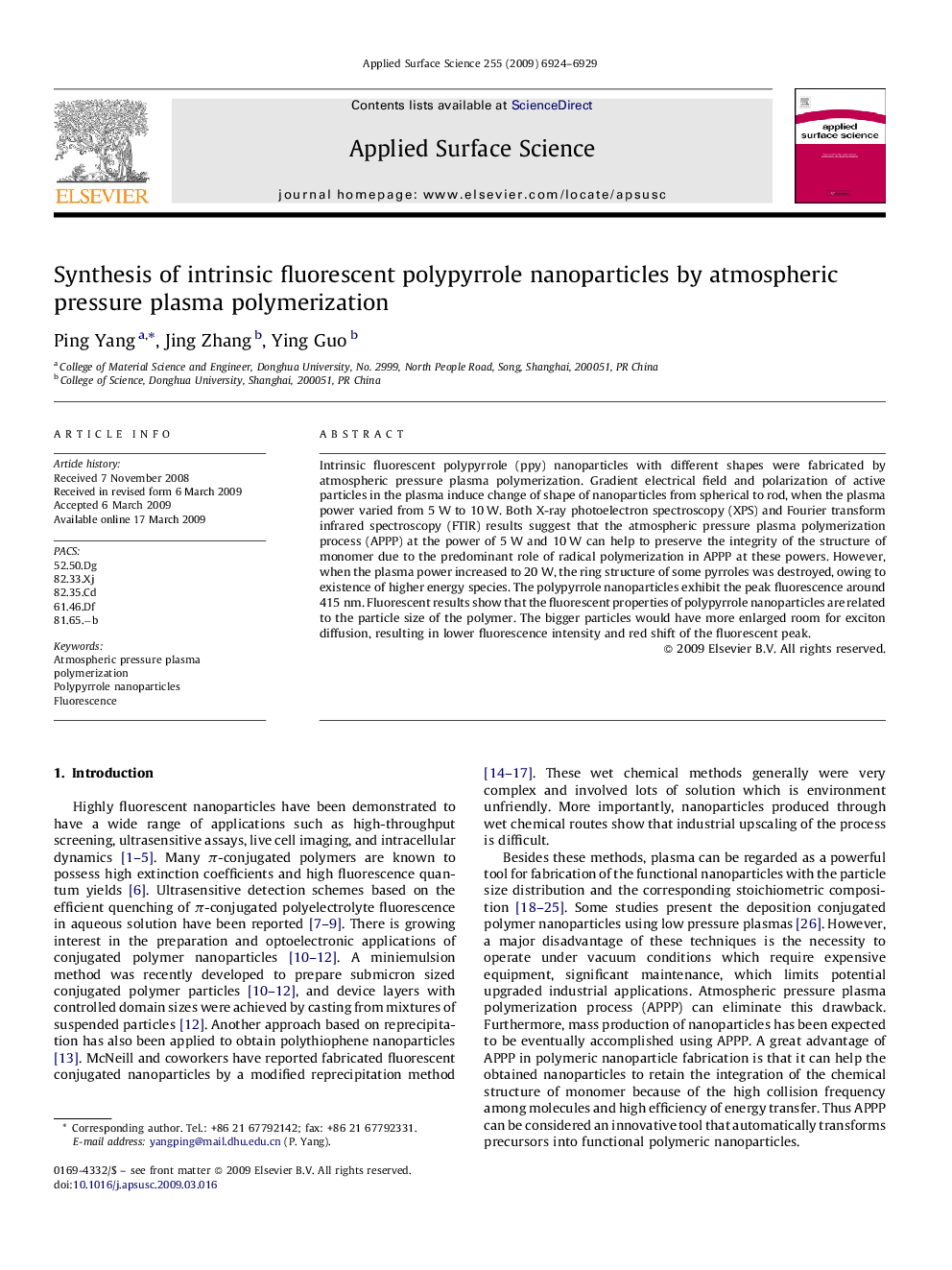| Article ID | Journal | Published Year | Pages | File Type |
|---|---|---|---|---|
| 5369164 | Applied Surface Science | 2009 | 6 Pages |
Intrinsic fluorescent polypyrrole (ppy) nanoparticles with different shapes were fabricated by atmospheric pressure plasma polymerization. Gradient electrical field and polarization of active particles in the plasma induce change of shape of nanoparticles from spherical to rod, when the plasma power varied from 5Â W to 10Â W. Both X-ray photoelectron spectroscopy (XPS) and Fourier transform infrared spectroscopy (FTIR) results suggest that the atmospheric pressure plasma polymerization process (APPP) at the power of 5Â W and 10Â W can help to preserve the integrity of the structure of monomer due to the predominant role of radical polymerization in APPP at these powers. However, when the plasma power increased to 20Â W, the ring structure of some pyrroles was destroyed, owing to existence of higher energy species. The polypyrrole nanoparticles exhibit the peak fluorescence around 415Â nm. Fluorescent results show that the fluorescent properties of polypyrrole nanoparticles are related to the particle size of the polymer. The bigger particles would have more enlarged room for exciton diffusion, resulting in lower fluorescence intensity and red shift of the fluorescent peak.
